A Holistic Approach To Recycling Facility Design

Located in Ohio’s oldest African American community, the American Addition area of Columbus, the Rumpke Recycling & Resource Center (RRC) stands as a testament to the impact of thoughtfully designed infrastructure on cultivating community health, safety, and economic opportunity. The United States’ largest and most technologically advanced recycling facility, Rumpke RRC processes material from 50 Ohio counties, totaling approximately 60 tons of waste per hour. The $100 million, 223,000-square-foot facility designed by Moody Nolan includes offices and a material recovery facility, as well as dedicated spaces for research, career development, and public education.
The heart of the project lies in demystifying recycling for all stakeholders, from the community to employees and beyond, driving the design team’s prioritization of local engagement and transparency in operations. Underscored by its commitment to sustainability, the project translates this holistic approach into action that results in happier, healthier communities — a model that future facilities could utilize to create similar impacts.
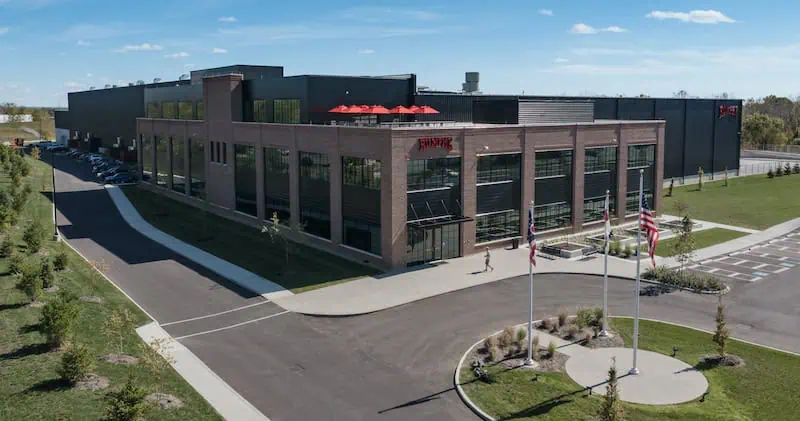
Community Investment Through Enhanced Understanding
Driven by the determination to deliver a facility that acts as a good partner to the city and neighborhood for generations to come, the design team worked closely with the Neighborhood Advisory Committee to gather localized input. This group, consisting of community leaders and residents from surrounding communities, provided insight leading to a design tailored to the preferences and needs of the population it serves, establishing the facility as a welcome addition to the area.
Rumpke RRC prioritizes community health, safety, and economic opportunities. Public career development spaces serve as a hub for hands-on learning, creating job pathways and fostering a deeper understanding of sustainability among visitors, students, and the workforce. Transparent career pathways and employee-driven amenities further stimulate the local economy, creating job opportunities in a healthy and safe workplace.
From a location standpoint, the facility was mindful to minimize its disruption to the neighborhood’s daily operations as much as possible. Effort was put into how traffic would access the site, placing the entrance in an area that didn’t affect the neighbors to the north. Landscaping and screening was thoughtfully incorporated throughout the site to establish buffer zones between the building and the nearby homes. Establishing a healthy relationship with the community laid the foundation of the facility’s seamless adoption and the championing of its initiatives in the area.
Prioritizing Education
With the capacity to process over 250,000 tons of curbside plastics, metals, and glass annually, the Rumpke RRC combines the use of the latest technology with the prioritization of community education. If communities don’t understand the effectiveness or operations of their local recycling initiatives, they’re less likely to champion their success. The approach of Rumpke RRC directly bridges that gap. Creating an awareness of the operations and functionality of the facility among residents results in an enhanced participation in recycling initiatives, making the process as impactful as possible.
Developed in collaboration with the Center of Science & Industry (COSI), the facility’s 3,000-square-foot education center welcomes the community to learn about the recyclability of products and see firsthand the impact of recycling efforts through interactive exhibits and a tour platform to view the recycling process in action. Working alongside Holt Experiential, the design team drew inspiration from visits to COSI’s interactive exhibits, observing the best approaches for cultivating a design that supports an engaging and immersive experience. During a walking tour of the recycling facility, guests learn about the technology used at the state-of-the-art facility, witnessing recyclables being sorted and separated firsthand. Transparent spaces also give employees, students, and visitors a unique view into the recycling process, dispersing natural light deep into the MRF.
Additionally, Rumpke RRC includes a career center on the first floor and a Research and Development (R&D) Center on the second floor. The R&D Center facilitates collaborations with local schools and universities to advance recycling research, with ongoing projects involving The Ohio State University and other institutions. These partnerships further the mission of the facility, establishing the space as a tool for students, neighbors, and employees to embrace and appreciate the recycling life cycle.
Next Gen Recycling Approaches
Rumpke RRC is not only a pioneer in its approach to community involvement, but also in its top-of-the-line recycling equipment and processes. The advanced optical scanners and AI-integrated equipment required the design team’s careful coordination with project partners, resulting in a layout configuration for the material recovery facility (MRF) that maximizes square footage for various operational zones.
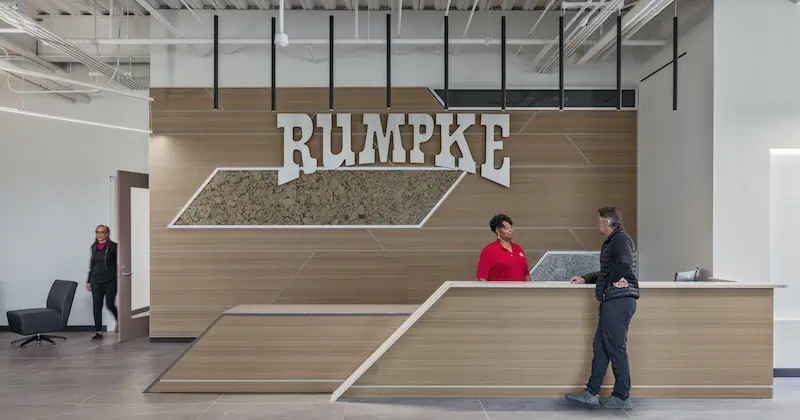

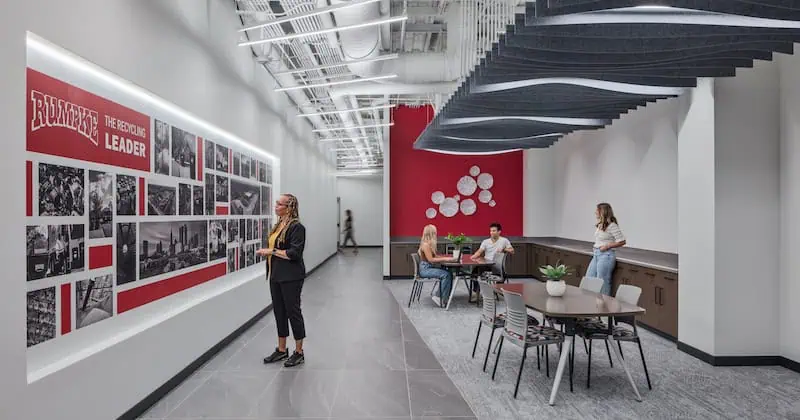
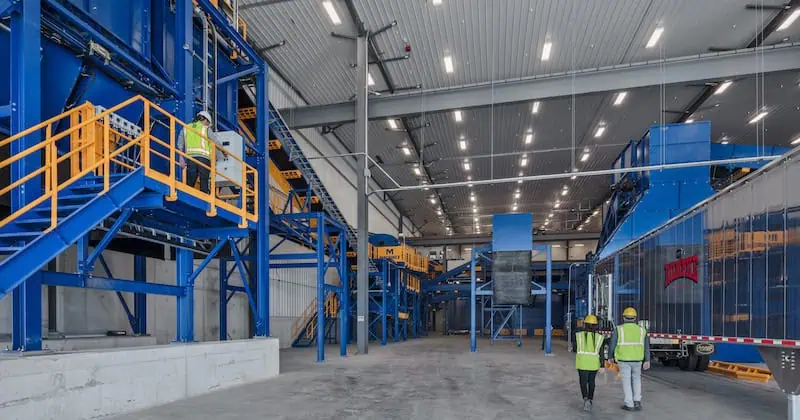

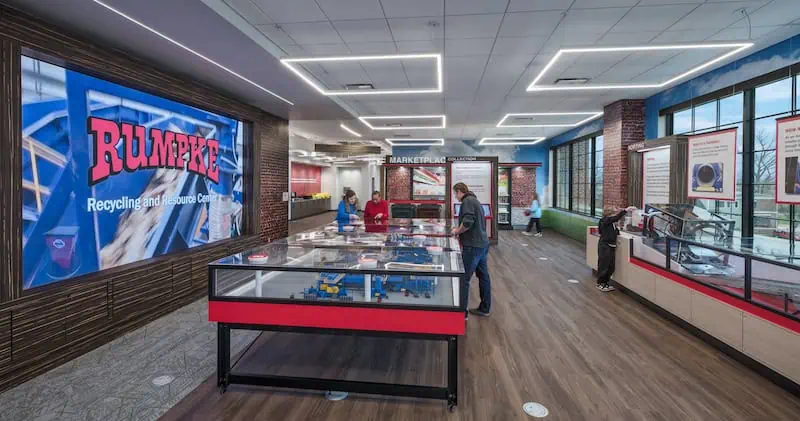

The MRF features three expansive tipping floors totaling 48,000 square feet — one for residential materials, one for commercial materials, and another for material sampling and auditing. The sorting, processing, and storage areas are thoughtfully designed and arranged to promote efficient operations while accounting for potential future expansions or technological upgrades. Designed with growth in mind, a built-in overhead crane system allows for the easy replacement of equipment if needed, facilitating the capability to upgrade in technology in the future. This ensures that Columbus and surrounding areas can scale up waste diversion as sustainability needs grow.
Making An Impact For Decades To Come
The facility’s impact on the community since its opening last year is tangible; Rumpke RRC exceeded its recycling efficiency expectations within just the first few weeks of operation. Further, the facility was able to increase recycling days to every week from every two weeks, with even more room to expand as Columbus continues to grow. Fit to meet the ever-changing needs of the community, workforce, and environment, Rumpke RRC provides a successful model for spearheading new and innovative approaches to recycling initiatives for decades to come.
PROJECT TEAM
- Architecture: Moody Nolan
- Construction firm: Elford, Inc.
- Recycling equipment manufacturer: Machinex
- Experiential design company: Holt Experiential
- MEP Engineer: M Engineering
- Structural Engineer: Korda/Nemeth
- Civil Engineer: Moody Engineering
By Craig Rutkowski, Caleb Bandy & Kristin Stubbs
Craig Rutkowski, Principal at Moody Nolan: As Principal in the firm, Craig’s artful and multi-faceted approach generates a wide variety of outstanding projects and teams. He has in-depth knowledge ranging from project management, design, programming, client contact and marketing, to production of contract documents including field observation, cost estimating and landscape design. Having successfully managed numerous corporate projects, Craig serves as the primary client contact, leading teams from project inception to completion. Craig holds his BS in Architecture from The Ohio State University.
Caleb Bandy, Senior Project Coordinator at Moody Nolan: Caleb Bandy is a Revit Certified professional and senior project coordinator at Moody Nolan and based in Columbus, Ohio. He has a diverse background in mixed use, multifamily residential, commercial, ecclesiastical, K-12 education, aviation, and hospitality projects. Caleb has an Associates of Applied Science, Architecture from CSCC and a BS in Natural Resources from The Ohio State University.
Kristin Stubbs, Associate Interior Designer at Moody Nolan: Kristin Stubbs is an NCIDQ certified interior designer based in Columbus, Ohio at Moody Nolan where she is actively involved in all phases of project execution from programming through construction. She has had the opportunity to execute small to large scale projects and work on various project types including healthcare, corporate, K-12 education, higher education, aviation, recreation and wellness, and luxury residential. Kristin has a Bachelor of Fine Arts in Interior Architecture from Ohio University.
Learn more about building design and construction on Facility Executive.

